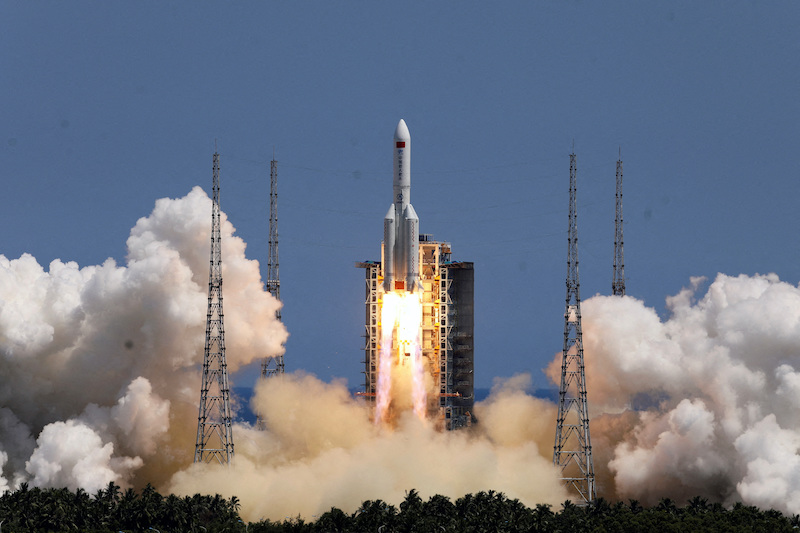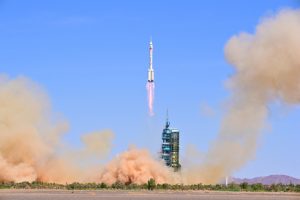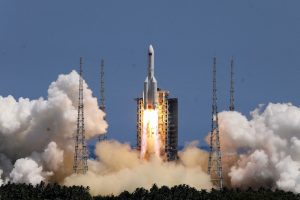A Chinese rocket plunged safely to Earth and into the Indian Ocean on Saturday after days of speculation but US space agency NASA has complained that it was kept in the dark about its descent path.
The Long March 5B rocket re-entered over the Indian Ocean at about 12:45pm EDT Saturday (1645 GMT), but NASA said any questions about the “re-entry’s technical aspects such as potential debris dispersal impact location” would have to be answered by China.
Aerospace Corp, a government-funded non-profit research centre near Los Angeles, said it was reckless to allow the rocket’s entire main-core stage – which weighs 22.5 tons (about 48,500lb) – to return to Earth in an uncontrolled reentry.
Also on AF: China’s Factory Output in Shrink Shock After Covid Outbreaks
NASA Administrator Bill Nelson said: ”All spacefaring nations should follow established best practices and do their part to share this type of information in advance to allow reliable predictions of potential debris impact risk.
“Doing so is critical to the responsible use of space and to ensure the safety of people here on Earth.”
Social media users in Malaysia posted video of what appeared to be rocket debris.
meteor spotted in kuching! #jalanbako 31/7/2022 pic.twitter.com/ff8b2zI2sw
— Nazri sulaiman (@nazriacai) July 30, 2022
Earlier this week, analysts said the rocket body would disintegrate as it plunged through the atmosphere but was large enough that numerous chunks would likely survive a fiery re-entry to rain debris over an area some 2,000km (1,240 miles) long by about 70km (44 miles) wide.
The Chinese Embassy in Washington did not immediately comment. China said earlier this week it would closely track the debris but said it posed little risk to anyone on the ground.
NASA Says China is Secretive
The Long March 5B blasted off July 24 to deliver a laboratory module to the new Chinese space station under construction in orbit, marking the third flight of China’s most powerful rocket since its maiden launch in 2020.
Fragments of another Chinese Long March 5B landed on the Ivory Coast in 2020, damaging several buildings in that West African nation, though no injuries were reported.
By contrast, he said, the United States and most other space-faring nations generally go to the added expense of designing their rockets to avoid large, uncontrolled re-entries – an imperative largely observed since large chunks of the NASA space station Skylab fell from orbit in 1979 and landed in Australia.
Last year, NASA and others accused China of being opaque after the Beijing government kept silent about the estimated debris trajectory or the reentry window of its last Long March rocket flight in May 2021.
Debris from that flight ended up landing harmlessly in the Indian Ocean.
- Reuters with additional editing by Sean O’Meara
Read more:
China Tracks Debris of 22-Tonne Rocket Crashing Towards Earth
Beijing Denies China Rocket Caused Moon Crater – Forbes
China Launches New Lab Module for Tiangong Space Station























